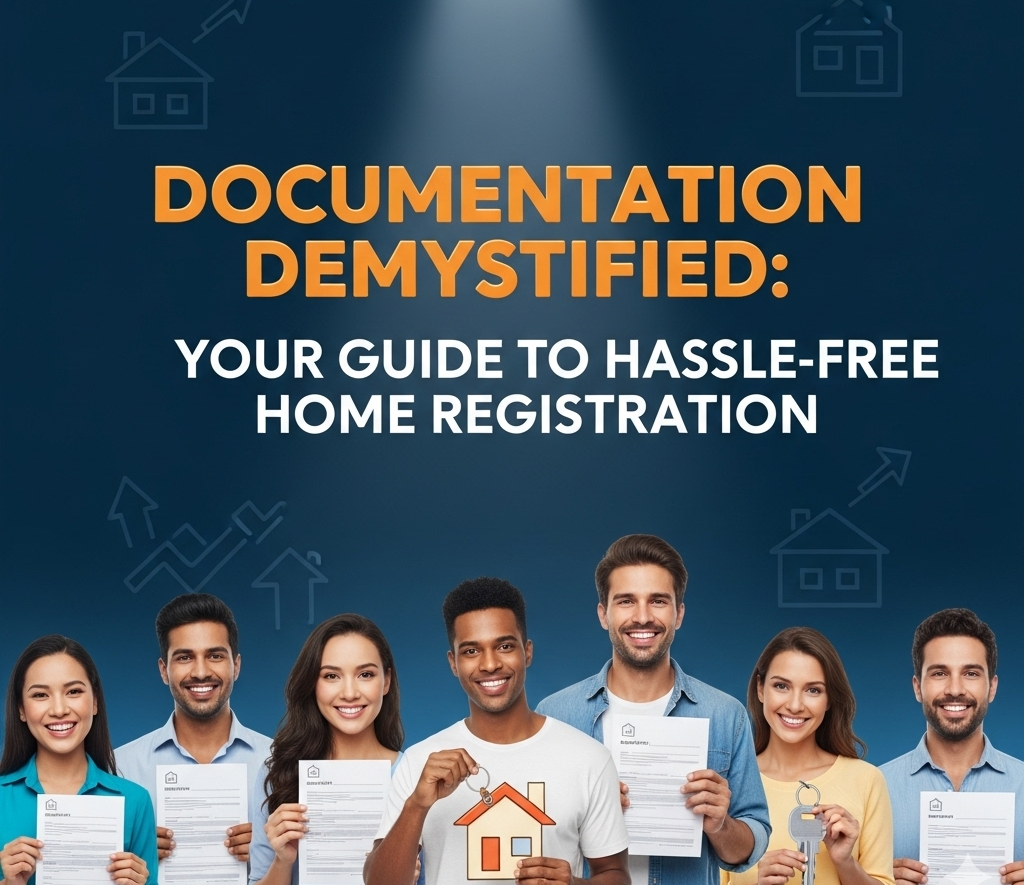Buying your dream home or making your first property investment should feel exciting—not overwhelming. Yet for most people, the moment paperwork and property registration enter the picture, the excitement quickly turns into stress. Long queues at sub-registrar offices, endless lists of documents, and the fear of missing one tiny detail often make buyers anxious.
But here’s the truth: home registration today is not as complicated as it seems. With new digital reforms and smarter processes, registering your property is becoming faster, safer, and more transparent across India. Whether you’re a first-time buyer, an investor learning how to invest in real estate, or simply curious about how the process works, this guide will break it all down for you in simple, human terms.
Why Home Registration Still Feels Like a Maze
Even with all the reforms, many people continue to believe that property registration is a tedious ritual. Why?
Endless paperwork
Sale deed, encumbrance certificate, tax receipts, and No-Objection Certificates – just remembering the names can be overwhelming.
Fraud fears
Stories of fake ownership claims or double registrations still make people nervous
Time & effort
Traditionally, registration meant hours spent at government offices, waiting for your turn.
The good news is that this picture is changing. With digitization, Aadhaar authentication, and state-level innovations, home registration is no longer an endless maze.
The Shift Towards Easy Registration
India is actively modernizing the real estate documentation process:
- The Draft Registration Bill 2025 will enable online document submission, Aadhaar-based authentication, and instant e-certificates.
- Maharashtra has integrated its system with RERA and now allows registration at any sub-registrar within the district.
- Uttar Pradesh is digitizing all property transactions by 2026, even adding QR codes to titles.
- Tamil Nadu is piloting a “presenceless” model where you won’t even need to visit the registrar’s office.
So, the era of waiting endlessly in offices with a pile of files is slowly fading away.
Step-by-Step: How Modern Home Registration Works
Here’s how you can register your property today in most states:
- Access the state’s official registration portal
- Log in to your state’s property registration website.
- Create an account and choose the type of document you want to register.
- Upload necessary documents
- Sale deed (executed and signed)
- Encumbrance certificate (EC)
- Property tax receipts
- No-Objection Certificates (if applicable)
- Aadhaar cards of buyer and seller
- Identity verification
- Authentication happens through Aadhaar biometrics or OTP.
- Some states still require you to visit for thumb impression scanning, but soon this will be optional.
- Pay stamp duty & registration fees
- Payment is made online using net banking, UPI, or debit cards.
- An electronic e-stamp receipt is generated immediately.
- Book an appointment (if required)
- In Maharashtra, you can register at any sub-registrar’s office in your district.
- In Tamil Nadu, you may soon complete everything without visiting in person.
- Submit & receive your registration certificate
- Once verified, the system issues an electronic registration certificate.
- This certificate is your legal proof of ownership.
Smart Checklist Before You Hit ‘Submit’
- Keep both hard copies and scanned versions of documents ready.
- Double-check details on Aadhaar and sale deed they must match exactly.
- Use the official state website never third-party shortcuts.
- Save your transaction ID and e-stamp receipt carefully.
- If buying for investment, confirm property details in the state’s land record portal before paying.
This checklist ensures you avoid last-minute hiccups and makes the process truly hassle-free.
Why Documentation Matters in Learning How to Invest in Real Estate
Many beginners focus only on location, price, or builder reputation when figuring out how to invest in real estate. But legal documentation is just as important. Here’s why:
- Clarity of ownership: Clean papers protect you from future disputes.
- Easier resale: A properly registered home sells faster and fetches a better value.
- Peace of mind: Investors sleep better knowing their purchase is legally bulletproof.
- Eligibility for loans: Banks won’t approve a home loan without a registered sale deed.

So, if you’re serious about how to invest in real estate effectively, mastering documentation is non-negotiable.
Real-Life Examples: How States Are Making It Easier
- Maharashtra: Over 60,000 registrations completed in just four months using intra-district flexibility. No need to travel across the city for your appointment.
- Uttar Pradesh: By 2026, every property transaction will be online. Plus, women buyers get rebates on ownership, making it a progressive move.
- Tamil Nadu: A presenceless registration model is underway. Soon, buyers won’t even need to appear at the registrar’s office.
These examples show how reforms are directly cutting down stress for everyday buyers and investors.
Risks & Precautions You Should Keep in Mind
- Not all states are fully digital: Smaller towns may still require physical visits.
- Data mismatches: Even a small spelling difference in your Aadhaar and sale deed can delay your registration.
- Fraudulent agents: Always cross-check if you’re using middlemen stick to government portals when possible.
- System glitches: Save every receipt and transaction ID. They are your backup proof in case the portal hangs.
Being aware of these risks keeps you one step ahead.
Final Words
Home registration doesn’t have to scare you anymore. With digital tools, Aadhaar-linked verification, and reforms like the Registration Bill 2025, the process is becoming smoother each day. If you’re exploring how to invest in real estate, understanding documentation gives you the confidence to make decisions smartly and securely.
So the next time someone says property registration is a nightmare, you’ll know better. All it takes is the right checklist, the right portal, and the right mindset.
FAQs
You typically need the sale deed, encumbrance certificate, property tax receipts, Aadhaar cards of both buyer and seller, and NOCs if required.
Yes. You can upload documents, pay stamp duty, and even get an e-certificate online. Some states still require biometric verification in person, but this is changing.
It means you won’t have to visit the registrar’s office physically. Verification will be done digitally using Aadhaar. Tamil Nadu is piloting this system.
Yes, when you use official government portals. Always avoid third-party links and ensure your Aadhaar details are accurate.
It ensures your investment is legally valid, protects you from disputes, makes resale easier, and strengthens your financial confidence as an investor.


Write Your Comment